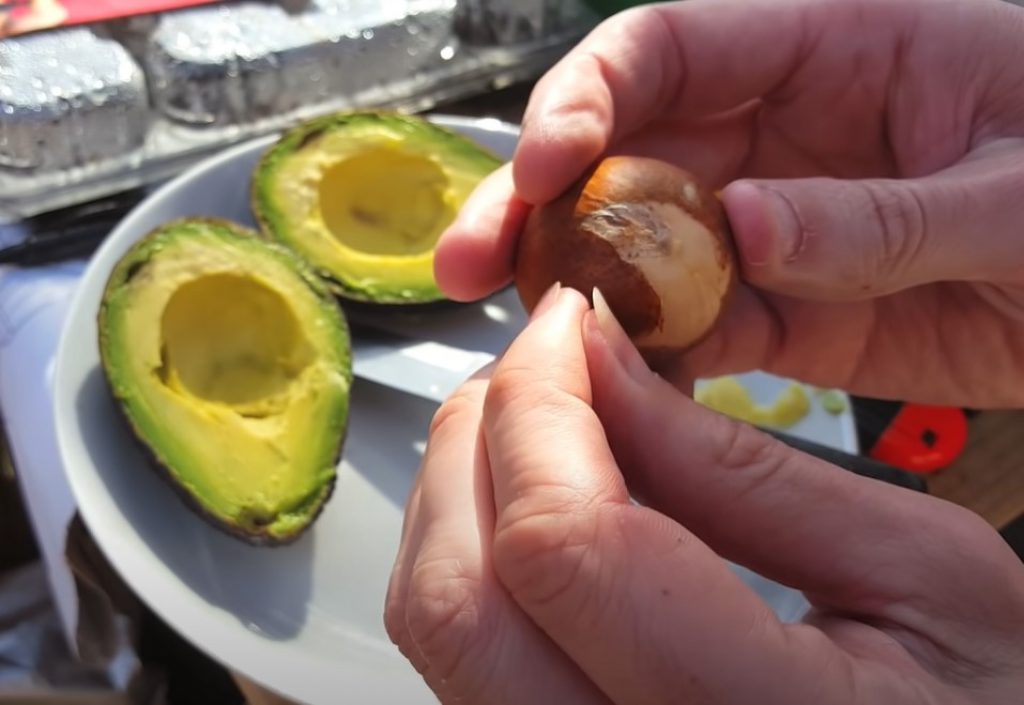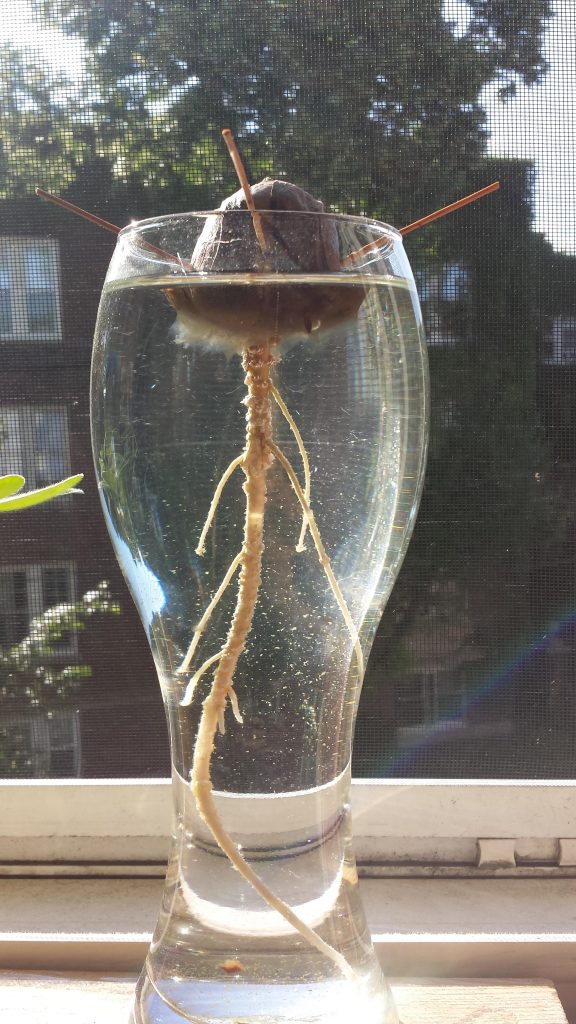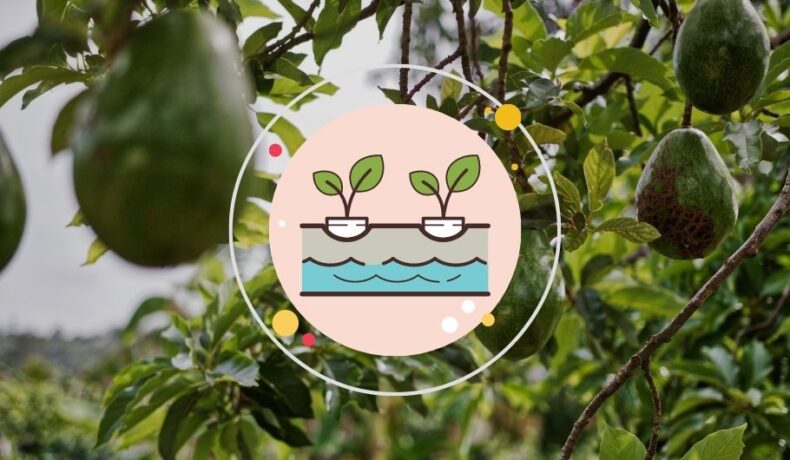Are you wanting to grow a hydroponic avocado?
These wonderful fruits, rich in healthy fats, vitamins, and fiber, can be used in guacamole, on toast, and even in some desserts. It’s no wonder many people out there want to grow their avo trees at home.
In this article, we discuss whether or not it’s possible to grow these awesome fruits hydroponically, and if so, how you’d go about doing it.
Table of Contents
What is a hydroponic avocado?
In short, a hydroponic avocado is an avocado that’s been grown in a hydroponic system. For those of you who aren’t yet familiar with hydroponics, here’s a brief summary of the concept:
Hydroponic growing uses a nutrient-rich, water-based solution instead of soil as a growing medium for plant propagation.
With this method, nutrients that have been added to the solution are fed directly to your plants.
While this takes place, your plants can access ample amounts of oxygen, allowing for greater quality produce and noticeably less time between your yields.
Can an avocado be grown hydroponically?
Yes, it is possible for you to grow avocados hydroponically. However, you’ll find that most people choose not to, mainly because of their size.
But, as the old adage goes, “where there’s a will, there’s a way”.

Source: FCS Quaker Makers
At full maturity, this fruit-bearing tree can reach heights of 15 to 20 feet with a width of 5 to 8 feet. But when grown in a container, they can reach heights of between 5 to 7 feet.
Before you grow your hydroponic avocado
Before we go any further, there are two very important facts you should know:
- Avocado trees take quite some time to bear fruit.
- They do not grow true to seed.
How long do they take to bear fruit?
According to California Avocados, if you decide to plant a cloned seedling, expect to wait 3-4 years for the fruit to appear. If you start from a seed, you’ll be waiting a fair bit longer. It can take 5-13 years until your tree is mature enough to set fruit.
Girdling
If you’re confident enough to do so, you can girdle your avocado tree. Girdling is a practice that people use to increase fruit productivity in fruit trees.
It’s a simple process of cutting through and removing the bark in a 2 cm diameter circular pattern around one-third of the limbs per year. In the case of avocado trees, this practice not only increases the yield of a tree but can also ‘shock it’ into producing fruit.
Please Note: Do this at your own risk and only consider doing it once your tree has had enough years to mature and establish a solid root system.
True to Seed
Avocados don’t produce true to seed, meaning you won’t get the same type of fruit as the avocado from which the pit came.
Commercial avocado trees are propagated from cuttings. Cuttings of one variety are grafted onto the rootstock of another variety to produce the best outcome.
So if you’re looking to grow an avocado tree to eat the fruit, it’s best to purchase a seedling from a nursery rather than using any old avocado seed.
Equipment needed to grow a hydroponic avocado
To grow your very own hydroponic avocado tree, you’ll need the following:
- Avocado
- Toothpicks
- Glass container
- Water
- Nutrient solution
- pH meter
- pH calibration solution
- Plant containers
- Chosen hydroponic system
- Grow Lights (if growing indoors)
- Grow tent ( if you’d like to grow indoors)
(All products are sourced from Amazon.)
Be sure to check out our latest article covering pH balance for hydroponics.
How to grow a hydroponic avocado from seed
If you’ve decided to take the leap and grow your very own avocado tree, then it’s time to get down to business.
Here are the steps you’ll need to follow:
Please note: This article discusses the toothpick and water method.
Step 1: Prep your seed

Source: Project Diaries (Youtube Channel)
Start off by carefully removing the pit from the avocado. Gently rinse the seed to remove any remaining flesh still present.
This can be rather difficult, so to make it easier, soak the seed in lukewarm water for 10 minutes to soften the flesh. Be careful when removing the flesh so as not to damage your seed.
Step 2: Toothpick time
Observe your seed and determine the top and bottom sides of it.
The top part (slightly pointier) is where the stem will emerge from, while the bottom part (slightly flatter) is where the roots will emerge from.
Once you’ve figured this out, insert 2-4 toothpicks at a 45° angle around the outer edges of your seed. Avoid the ‘fault lines’ that you’ll see in your pip while doing so.
Related reading: DIY Hydroponic Nutrients (How To Make Your Own Formula)
Step 3: Add water
The trick here is to keep the bottom of your seed moist. To do this, insert your seed into the top of a drinking glass or jar. Use the toothpicks as support to hold the seed near the top of the container, half-submerged.
The bottom of the seed must stay moist to produce roots, so add water as needed to replenish the reservoir.

Source: Avo Seedo
Step 4: Let the waiting begin
At this stage, you’ll want to place your seed in a spot that’s both warm and bright, but avoid putting it into direct sunlight just yet, changing the water once a week or whenever it becomes cloudy.
Before the seed starts to sprout, the top of the seed begins to dry out, the outer brown covering falls off, and the pit splits open from the bottom.
Eventually, a small root emerges from the bottom of the pit. The root grows first, and a shoot appears later, rising from the top of the pit.
Once the root begins to form, do not let the water level drop. Remember, roots need to be submerged to survive.

Source: Reddit
Step 5: Prune, then plant avocado seedling
When the avocado stem grows to at least 8 inches tall, it’s time to cut it back by about 3 inches. This causes the plant to branch out and become bushier.
When the plant is around 6 inches tall again, it’s time to transplant your seed into your chosen hydroponic setup.
Personally, we recommend one of the following systems:
Step 6: Grow and pinch
Continue to pinch your plant as it continues to grow, but again make sure that it’s at least 8 inches tall when you do so. Also, be sure to water frequently enough to keep the soil moist. Never allow your avocado to dry out so much that its leaves wilt.
Tips for growing an avocado hydroponically
There are several tips you can use that’ll make your life much easier when growing hydroponic avocados. Applying these tips and the information from the previous sections will set you up for success.
Increase pollination
Firstly, an avocado tree has both functional male and female organs. The male floral organ (stamen), which produces pollen, comprises the anther and filament. The female floral organ (pistil), which receives the pollen, comprises the stigma style and ovary.

What’s more, avocado trees have very unique flowers that exhibit a type of flowering behavior known as “synchronous dichogamy”. This is the simultaneous change in sex phases of all flowers in an inflorescence or entire plant.
Let’s dive into this incredibly fascinating process a little, shall we?
Changing of the Sexes
During synchronous dichogamy, an individual flower will open for two days, and the timing of the male and female phases is distinct.
There are two flowering types:
- Type A: These varieties open as female on the morning of the first day. The flower then closes in the late morning or early afternoon. It will remain closed until the second day’s afternoon when it opens as male.
- Type B: These varieties open as female on the first day’s afternoon, close in the late afternoon, and re-open as male the following morning.
So, what is the result of this flowering behavior? It helps to promote cross-pollination since an individual tree’s male and female phases occur at different times.

What we’re trying to get at here is simply this — while avocado trees can self-fertilize and produce fruit, your yields should increase if you grow both a Type A and Type B avocado tree.
Temperature requirements
According to the UC Master Gardener Program of Contra Costa, your avocado trees will be at their best in moderately warm temperatures ( 60‒85 °F/15-29 °C) with moderate humidity.
Your optimum fruit set will occur from 65‒75 °F (18-23 °C).
Take extra care
The avocado is a shallow-rooted tree with most of its feeder roots in the top six inches of the soil, so you’ll need to provide it with good aeration. Additionally, its root system is very sensitive, so do not disturb it when transplanting.
pH Requirements
The general consensus appears to be a pH level of between 5 – 7. However, UC’s Master Gardener Program states that “avocado trees like the pH of the soil to be about 6‒6.5.”
When and where to plant
For those of you who want to grow your hydroponic avocados outdoors, you’ll want them at the beginning of Spring. If you plant them during the summer, there is a risk of sun damage. This is because avocado trees don’t absorb water very well when they are young.
You’ll also want to plant your trees in a spot that’s protected from both wind and frost — planting in full sun is ideal, as these trees thrive in bright, direct, and unfiltered sunlight.
Dwarfing your tree
You’ll recall that we discussed the potential size of an avocado tree — they aren’t exactly small. As such, they aren’t naturally made for hydroponic setups, so you’ll want to dwarf your tree to make the process more manageable.
To do this, you’ll need need to restrict the following:
- Grow space.
- Availability of water.
- The amount of nutrients.
This is easier said than done. Ideally, you want your tree to grow as quickly as possible while also stunting its growth and making sure that it doesn’t wither and die.
Early on, the growing container should be as small as possible but large enough to house the plant for its first 12 months. You’ll want to start with an 18″ (45cm) container. This will increase as time passes.
Once the roots are well-formed, you can move your tree to a 5-gallon (20-25L) sized container. Remember that your growing space will determine the final size of your tree, so make it manageable for yourself.
Pinching to reduce size
Aside from restricting the above elements, you’ll also need to pinch your tree when necessary. This process helps keep your tree fuller and shorter.
In order to do this, pinch the central stem back to the topmost bud as soon as it gets at least 8 inches tall. This is the stem that will later develop into a trunk. In short, this will keep the tree from growing upwards.
As long as you leave an 8-inch length of the stem, you can cut up to half the length of it.
Here is a short but informative video that demonstrates how to pinch your plant, as well as the effects of pinching.
Related reading: Hydroponics With Fish (An Intro To Aquaponics)
Final Thoughts
It’s safe to say that avos aren’t exactly the easiest fruit to grow hydroponically. However, it is entirely possible. With a bit of know-how, a little love, and a lot of patience, you’ll be well on your way to growing your own avocado tree!
If you’ve managed to grow your own hydroponic avocado trees, please feel free to share your experience with us in the comment section below.

